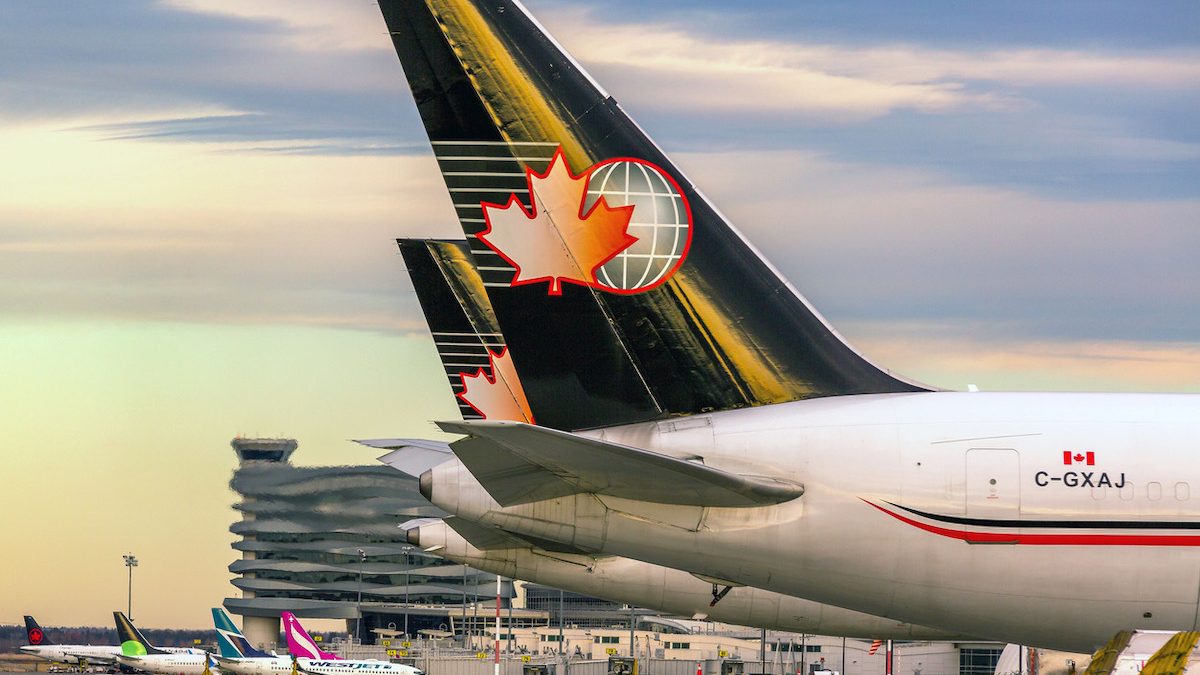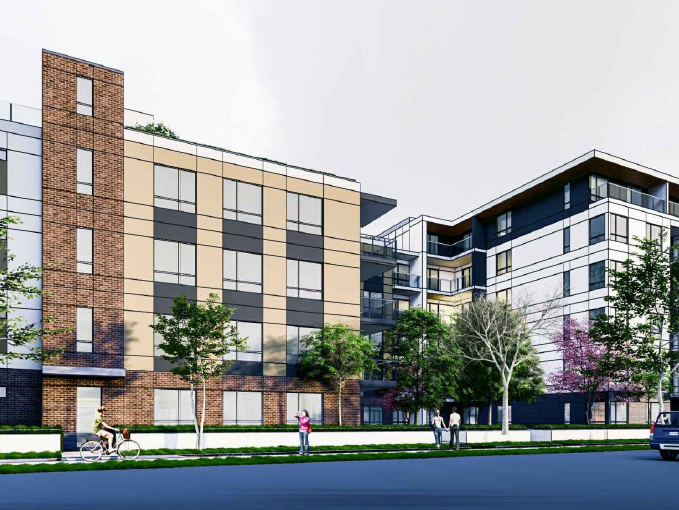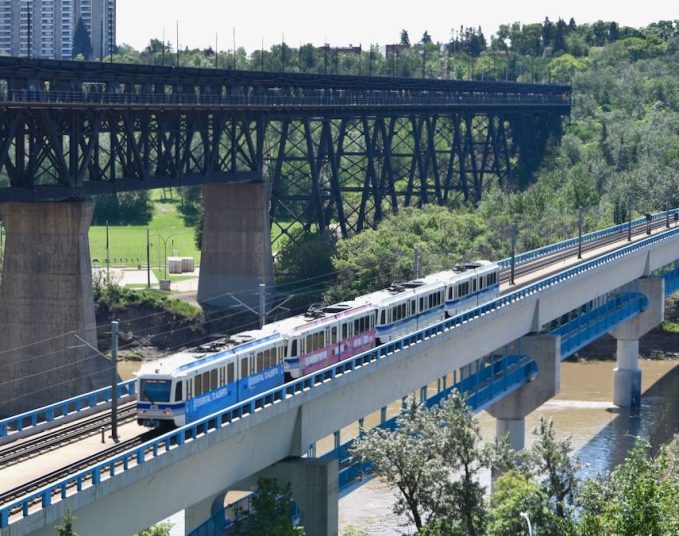Myron Keehn, CEO of the Edmonton International Airport, appears on the screen via Zoom. He’s in a hotel room, but he can’t tell me what city he’s visiting. He’s on business, trying to drum up business for the airport.
In 2022, the airport saw more than 5.8 million passengers come through, as the air travel industry continues to recover from the COVID pandemic. That number was a 109 per cent increase over 2021. Keehn says the forecast is that 7-8 million passengers will use the airport in 2023, which would get the city close to the pre-pandemic level of 8.2 million.
So, the recovery is happening. And, as it stands, the airport is serving more cities non-stop than it did before the pandemic. A little over two months ago, WestJet announced a major expansion of its service going in and out of Edmonton International Airports, with new non-stops to Seattle, Minneapolis-St. Paul, London (Ont.), Moncton, Nanaimo, Penticton, Charlottetown and Ottawa.
And, this summer, Condor, a German airline, will begin direct flights to Frankfurt.
UA asked Keehn some questions about the state of air travel coming in and out of Edmonton. (This interview has been edited for length and clarity).
UA: In this “new normal,” what is the challenge to not only replace flights that were slowed/stopped during the pandemic, but introduce new routes?
MK: Airlines respond to demand. The air industry is competitive. Airlines decide, what does it cost to operate in our market, but also what’s the opportunity cost to operate somewhere else? We need to ensure that people from the Edmonton region and the North fly out of Edmonton first and fill our seats. Airlines respond to that demand.
With that “new normal” that you mentioned, there’s a bunch of positive factors in our ecosystem and in the Edmonton Metro region: Low unemployment rate, savings during the pandemic, vacation deprivation — most people want to get on a plane and go somewhere — and the desire to reconnect with family and friends. Tourism travel season has started again, conferences have started again.
But the desire to travel and the capacity to do it are different, and they are affected by what’s happening in the world. There is a challenge in the industry with recruiting and retaining pilots. Inflation has had an impact. For us to attract service to Edmonton, we have more non-stop destinations than we did before COVID. It’s a matter of having enough seats in the market, because almost every flight going out is full. That is great, because airlines respond to full seats.
UA: It’s not just about the airport attracting flights, is it?
MK: What I am proud of is how the community came together, the municipalities came together, to create the Regional Air Services Opportunity Fund (managed by Edmonton Global). Every airport goes to every airline to say “we’re great, you should talk to me.” If you put your shoe on the foot of the airline, they get approached every day by hundreds of people saying “we’re great, please fly to us.” But the community coming together in Edmonton, — whether it’s the political community, the business community, the tourism community, the post-secondary community — all coming together to attract the flight and then supporting the flight, it makes a huge difference. Everyone in Edmonton is coalescing around this collectively, and airlines respond to that.
(Mayor Amarjeet Sohi traveled to Frankfurt to support the attraction of the Condor flight that begins this summer).
UA: When an airline says yes to Edmonton, what comes next?
MK: Getting new routes at the front end is quite intensive, because airlines have to start a new base, have a new crew, and they don’t have the marketing apparatus yet. It really takes a village to support an airline.
Imagine coming in as an airline: You need a ground handling contractor, check-in agents; you need to have fueling, catering and de-icing; you need to have baggage, you need to have cargo. You have to work with the business community, you have to work with the travel community, there’s the freight forwarders. Aviation is an ecosystem. And Edmonton should be proud of how our ecosystem comes together, because there are between 10 and 12 agencies that touch the plane before it moves.
UA: How much effort, on your behalf, goes into bringing a new flight to Edmonton?
MK: In some cases, it can take years. It’s different for different markets. There’s a saying in aviation: “If you’ve seen one airport, you’ve seen one airport.” That’s because the airport is really a reflection of that community.
There are three key drivers when it comes to an airline making a decision to put a route into an area. One is, how many people are in the front of the aircraft booking business class, often at the last minute? So, how many head offices do you have, how many big businesses do you have?
The second is the rest of the airplane, the economy class. How many people are there, what’s the demand, what’s the stimulation? What connectivity do they have across the network?
And the third stipulation: What kind of cargo do you have on the bottom of the plane? We saw the importance of cargo during COVID. Airplanes are big, movable warehouses. There’s medical supplies and drugs and plasma and organs, all kinds of things go on the airplane. There’s life-saving medicines.
So, when you start the conversation, it’s based off data, but there’s also stimulation in the market. Tourism assets are also an important component. But when we go talk to an airline, we’re not talking just as the airport, we have the community support to do that.
UA: So, what’s next on the wish list?
MK: The areas we are working on right now, is to get back into the eastern seaboard of the United States. We’re very thankful that WestJet launched Minneapolis, we’re delighted Denver has gone back to twice a day with United, we’re thankful Alaska is back in the market. We’ve got great coverage in the western U.S. and central U.S., but we need the East Coast.
UA: And, we’ve heard a lot about staffing shortages and flight cancellations… globally. How challenging is that?
MK: The industry as a whole has faced labour shortages in certain areas. One of the challenges Edmonton is particularly facing is that the U.S. recovered quicker than Canada did, in flying. In doing that, they became a big sponge to attract certain talent. So, trying to attract flights from certain areas is difficult because they don’t have the pilot capacity. And, through COVID, a lot of pilots retired. That’s being worked on. Flight schools are opening up, airlines are creating their own flight schools. But it all takes time — it’s not like an immediate light switch turning on.
The standards are changing because the technology is evolving, you can do a lot of things in the simulator. There are sims that provide you with better training opportunities than flying thousands of hours. Safety is still the No. 1 priority, but there are new ways that have been introduced.
Globally, the challenge is getting the aircraft through the air that were parked through COVID. The U.S. is about a year ahead of us in terms of recovery. Some markets in the U.S. are already 10 to 20 per cent of where they were prior to COVID. For some of these markets, the new normal isn’t where they used to be, it’s higher. We’re a year behind them. In Edmonton, we’re blessed that we’re one of the fastest to recover (in Canada). And a big part of that is that the community came together to show their support, not just talk about their support.
Savvy AF. Blunt AF. Edmonton AF.




